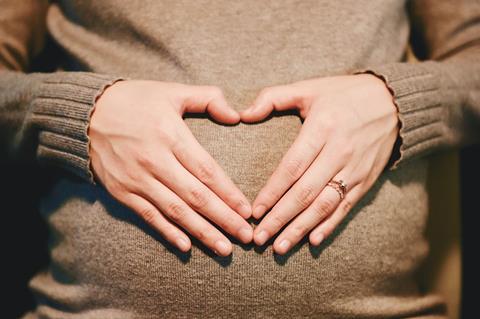During the COVID-19 pandemic, above all before vaccines were available, an alarm was sounded regarding a possible correlation between severe cases of COVID-19 in pregnant women and preeclampsia, a condition characterized by high blood pressure (hypertension) in the expectant mother and high levels of protein in her urine (proteinuria). It can entail dangerous complications for mother and baby.
Preeclampsia was more frequent in pregnant women infected by SARS-CoV-2 and was associated with a heightened risk of complications and death.

READ MORE: COVID study reveals virus-induced inflammation during pregnancy, redefines vertical transmission
READ MORE: Study finds no association between COVID-19 vaccines and stillbirths
Differential diagnosis was a major clinical challenge at the time. While gestational preeclampsia, which is most frequent in the third trimester, elevates the risk of kidney and liver failure as well as causing placental dysfunction and high blood pressure, so does severe COVID-19, owing to the exacerbated inflammation caused by the virus.
Similarities between preeclampsia and COVID-19
The protocols for treating the two conditions are different. In the case of preeclampsia, the pregnancy must be interrupted and the baby delivered as soon as possible by cesarean section, whereas in a woman with COVID-19 the pregnancy can proceed, with clinical support until the infection improves.
Assuring a correct diagnosis was even more important in severe cases of preeclampsia (known as HELLP syndrome), especially before the 34th week of pregnancy.
Three years after the most lethal period of the pandemic, a review of the scientific literature supported by FAPESP and published in the American Journal of Reproductive Immunology emphasizes the pathophysiological similarities between preeclampsia and COVID-19.
The study was conducted by researchers at the State University of Campinas (UNICAMP) in São Paulo state, Brazil, and Baylor College of Medicine in Houston, Texas (USA). The similarities highlighted in the article include shared pathways involving the renin-angiotensin system (a hormone system that plays a key role in regulating blood pressure and fluid balance in the body) and angiotensin-converting enzyme 2 (ACE2), the receptor to which SARS-CoV-2 binds to infect human cells.
COVID-19 may increase risk of preeclampsia
Another study by the same group identified biomarkers that distinguish preeclampsia from severe COVID-19 in pregnant women.
“The two conditions do indeed have many similarities. Both severe COVID-19 and preeclampsia can involve multiple organ dysfunction and high blood pressure. There are also similarities in the mechanism, as ACE2 plays a key role in regulating blood pressure. It’s possible therefore that COVID-19 heightens the risk of preeclampsia, as suggested by several studies that point to a higher frequency of preeclampsia in COVID-19 patients,” Maria Laura Costa do Nascimento, last author of the review article and a professor of obstetrics at UNICAMP, told Agência FAPESP.
More than 300 pregnant women die from preeclampsia in Brazil every year. High-income countries have all but eliminated this cause of death thanks to investment in actions to assure timely diagnosis and effective treatment, Nascimento said.
Maternal deaths rose very sharply during the pandemic. Data from the Ministry of Health show that 1,965 women died during or following pregnancy and childbirth in 2020. The number jumped to 3,030 in 2021. The same data also show a high risk of preeclampsia.
Rise in maternal mortality during the pandemic
“Our goal for 2030 in terms of maternal mortality is to reach less than 30 deaths per 100,000 live births. Right now (based on data for 2023), we’re at 70 deaths per 100,000 live births. During the pandemic, in 2021, the national average was 120, with higher numbers in some states and regions. COVID-19 magnified the preexisting trend and evidenced the impact of this condition on adverse outcomes,” she said.
The rise in maternal mortality during the pandemic cannot be blamed on the rise in cases of preeclampsia. “This is due to lack of both epidemiological surveillance findings and a proper diagnosis of the condition,” Nascimento said. “What we can say, based on a multicenter study we conducted during the pandemic with data from 16 maternity hospitals across Brazil, is that the risk of death or severe disease increases when both conditions are present. Moreover, our review of the literature shows that the prevalence of preeclampsia rises among COVID-19 patients.”
Biomarkers
Another study by Nascimento’s group identified biomarkers that distinguished between preeclampsia and COVID-19 in pregnant women. “They’re classical markers of preeclampsia (proteins sFlt-1 and PlGF) that help control vasoconstriction and vasodilation. These proteins are produced by placenta cells throughout gestation. An imbalance is observed in cases of preeclampsia, with proangiogenic proteins (PIGF) diminishing and antiangiogenic proteins (sFlt-1) increasing. We concluded that these biomarkers are specific for preeclampsia. They aren’t altered in COVID, which could help assure a differential diagnosis,” she said.
There are well-established risk factors for preeclampsia, she added, especially chronic high blood pressure, having had preeclampsia in a previous pregnancy, expecting twins, having diabetes, and having an autoimmune disease. “Several factors make close monitoring of all pregnancies advisable. COVID-19 may have to join the list in future,” she said.
Topics
- angiotensin-converting enzyme 2 (ACE2)
- Baylor College of Medicine
- biomarkers
- COVID-19
- FAPESP
- HELLP syndrome
- hypertension
- Maria Laura Costa do Nascimento
- MATERNAL MORTALITY
- One Health
- PlGF
- preeclampsia
- pregnancy
- proteinuria
- renin-angiotensin system
- Research News
- SARS-CoV-2
- sFlt-1
- State University of Campinas (UNICAMP)
- The Americas
- USA & Canada
- Viruses







No comments yet